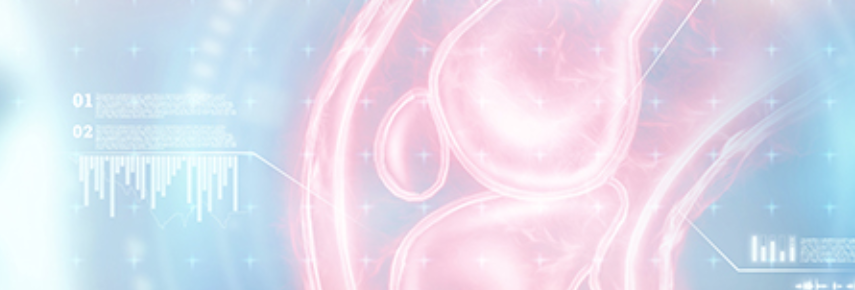Mark J Greenhill, Pooja Rangan, Wilber Su, J Peter Weiss, Michael Zawaneh, Samuel Unzek, Balaji Tamarappoo, Julia Indik, Roderick Tung, Michael F Morris
下载PDF
{"title":"心血管植入式电子设备和导线断裂或脱落患者的核磁共振成像。","authors":"Mark J Greenhill, Pooja Rangan, Wilber Su, J Peter Weiss, Michael Zawaneh, Samuel Unzek, Balaji Tamarappoo, Julia Indik, Roderick Tung, Michael F Morris","doi":"10.1148/ryct.230303","DOIUrl":null,"url":null,"abstract":"<p><p>Purpose To examine the clinical effect of lead length and lead orientation in patients with cardiac implantable electronic devices (CIEDs) and lead fragments or abandoned leads undergoing 1.5-T MRI. Materials and Methods This Health Insurance Portability and Accountability Act-compliant retrospective study included patients with CIEDs and abandoned leads or lead fragments undergoing 1.5-T MRI from March 2014 through July 2020. CIED settings before and after MRI were reviewed, with clinically significant variations defined as a composite of the change in capture threshold of at least 50%, in sensing of at least 40%, or in lead impedance of at least 30% between before MRI and after MRI interrogation. Adverse clinical events were assessed at MRI and up to 30 days after. Univariable and multivariable analysis was performed. Results Eighty patients with 126 abandoned CIED leads or lead fragments underwent 107 1.5-T MRI examinations. Sixty-seven patients (median age, 74 years; IQR, 66-78 years; 44 male patients, 23 female patients) had abandoned leads, and 13 (median age, 66 years; IQR, 52-74 years; nine male patients, four female patients) had lead fragments. There were no reported deaths, clinically significant arrhythmias, or adverse clinical events within 30 days of MRI. Three patients with abandoned leads had a significant change in the composite of capture threshold, sensing, or lead impedance. In a multivariable generalized estimating equation analysis, lead orientation, lead length, MRI type, and MRI duration were not associated with a significant change in the composite outcome. Conclusion Use of 1.5-T MRI in patients with abandoned CIED leads or lead fragments of varying length and orientation was not associated with adverse clinical events. <b>Keywords:</b> Cardiac Assist Devices, MRI, Cardiac Implantable Electronic Device <i>Supplemental material is available for this article.</i> © RSNA, 2024.</p>","PeriodicalId":21168,"journal":{"name":"Radiology. Cardiothoracic imaging","volume":"6 3","pages":"e230303"},"PeriodicalIF":4.2000,"publicationDate":"2024-06-01","publicationTypes":"Journal Article","fieldsOfStudy":null,"isOpenAccess":false,"openAccessPdf":"https://www.ncbi.nlm.nih.gov/pmc/articles/PMC11211945/pdf/","citationCount":"0","resultStr":"{\"title\":\"MRI in Patients with Cardiovascular Implantable Electronic Devices and Fractured or Abandoned Leads.\",\"authors\":\"Mark J Greenhill, Pooja Rangan, Wilber Su, J Peter Weiss, Michael Zawaneh, Samuel Unzek, Balaji Tamarappoo, Julia Indik, Roderick Tung, Michael F Morris\",\"doi\":\"10.1148/ryct.230303\",\"DOIUrl\":null,\"url\":null,\"abstract\":\"<p><p>Purpose To examine the clinical effect of lead length and lead orientation in patients with cardiac implantable electronic devices (CIEDs) and lead fragments or abandoned leads undergoing 1.5-T MRI. Materials and Methods This Health Insurance Portability and Accountability Act-compliant retrospective study included patients with CIEDs and abandoned leads or lead fragments undergoing 1.5-T MRI from March 2014 through July 2020. CIED settings before and after MRI were reviewed, with clinically significant variations defined as a composite of the change in capture threshold of at least 50%, in sensing of at least 40%, or in lead impedance of at least 30% between before MRI and after MRI interrogation. Adverse clinical events were assessed at MRI and up to 30 days after. Univariable and multivariable analysis was performed. Results Eighty patients with 126 abandoned CIED leads or lead fragments underwent 107 1.5-T MRI examinations. Sixty-seven patients (median age, 74 years; IQR, 66-78 years; 44 male patients, 23 female patients) had abandoned leads, and 13 (median age, 66 years; IQR, 52-74 years; nine male patients, four female patients) had lead fragments. There were no reported deaths, clinically significant arrhythmias, or adverse clinical events within 30 days of MRI. Three patients with abandoned leads had a significant change in the composite of capture threshold, sensing, or lead impedance. In a multivariable generalized estimating equation analysis, lead orientation, lead length, MRI type, and MRI duration were not associated with a significant change in the composite outcome. Conclusion Use of 1.5-T MRI in patients with abandoned CIED leads or lead fragments of varying length and orientation was not associated with adverse clinical events. <b>Keywords:</b> Cardiac Assist Devices, MRI, Cardiac Implantable Electronic Device <i>Supplemental material is available for this article.</i> © RSNA, 2024.</p>\",\"PeriodicalId\":21168,\"journal\":{\"name\":\"Radiology. Cardiothoracic imaging\",\"volume\":\"6 3\",\"pages\":\"e230303\"},\"PeriodicalIF\":4.2000,\"publicationDate\":\"2024-06-01\",\"publicationTypes\":\"Journal Article\",\"fieldsOfStudy\":null,\"isOpenAccess\":false,\"openAccessPdf\":\"https://www.ncbi.nlm.nih.gov/pmc/articles/PMC11211945/pdf/\",\"citationCount\":\"0\",\"resultStr\":null,\"platform\":\"Semanticscholar\",\"paperid\":null,\"PeriodicalName\":\"Radiology. Cardiothoracic imaging\",\"FirstCategoryId\":\"1085\",\"ListUrlMain\":\"https://doi.org/10.1148/ryct.230303\",\"RegionNum\":0,\"RegionCategory\":null,\"ArticlePicture\":[],\"TitleCN\":null,\"AbstractTextCN\":null,\"PMCID\":null,\"EPubDate\":\"\",\"PubModel\":\"\",\"JCR\":\"Q1\",\"JCRName\":\"RADIOLOGY, NUCLEAR MEDICINE & MEDICAL IMAGING\",\"Score\":null,\"Total\":0}","platform":"Semanticscholar","paperid":null,"PeriodicalName":"Radiology. Cardiothoracic imaging","FirstCategoryId":"1085","ListUrlMain":"https://doi.org/10.1148/ryct.230303","RegionNum":0,"RegionCategory":null,"ArticlePicture":[],"TitleCN":null,"AbstractTextCN":null,"PMCID":null,"EPubDate":"","PubModel":"","JCR":"Q1","JCRName":"RADIOLOGY, NUCLEAR MEDICINE & MEDICAL IMAGING","Score":null,"Total":0}
引用次数: 0
引用
批量引用

 求助内容:
求助内容: 应助结果提醒方式:
应助结果提醒方式:


